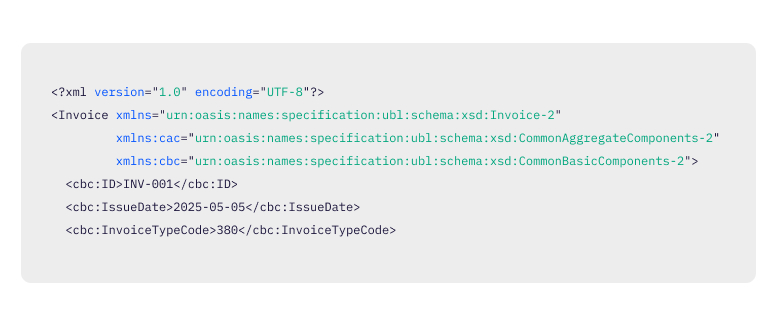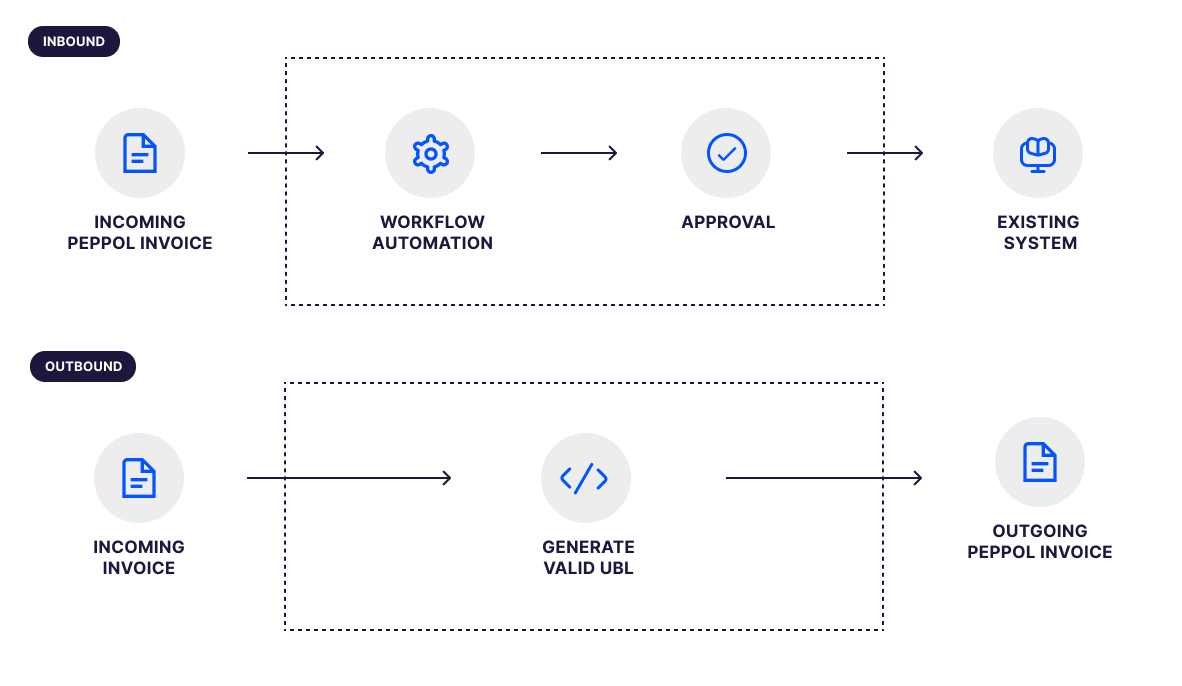Future-proof invoicing with Peppol
The current challenges in invoice workflows
Despite the push for digital transformation, many medium to large enterprises still rely on fragmented, unreliable invoicing processes. Paper documents, emailed PDFs and a patchwork of custom EDI integrations are still common. These legacy methods introduce critical pain points:
- Operational inefficiencies: Each invoice format requires different handling logic, leading to brittle workflows, manual validation steps and slower processing times.
- Limited data control: Extracting data from PDFs or emails often requires OCR or manual input, increasing the risk of errors and making downstream automation harder.
- Compliance pressure: With mandates such as the EU e-invoicing directive, governments increasingly require structured, auditable formats for B2B and B2G invoicing.
For enterprises scaling across borders or navigating complex tax regimes, these inefficiencies become both a financial and regulatory liability.
How does PEPPOL work?
PEPPOL (Pan-European Public Procurement Online) is a decentralized, standards-based network that enables secure and interoperable electronic document exchange between businesses and public institutions.
The network is built on the 4-corner model. This model defines how digital documents are securely exchanged using a standardized setup involving four roles: the Sender, their Access Point, the Receiver’s Access Point and the Receiver.
It allows any sender to reach any receiver through their respective access points, without needing direct system-to-system integration. Each party is connected through certified intermediaries, ensuring consistency and trust in the communication process.
To deliver a document, the sender submits it to their Access Point. This Access Point identifies the correct recipient using their unique PEPPOL ID, then queries the Service Metadata Locator (SML) to find the appropriate Service Metadata Publisher (SMP).
The SMP holds technical details about the receiver’s document capabilities and the address of their Access Point. This lookup ensures that the document can be delivered in the right format to the right endpoint, based on up-to-date registration information.
All communication between Access Points is secured using the AS4 protocol, which ensures encrypted, authenticated and reliable message exchange.
UBL
Universal Business Language (UBL) is an XML-based standard for electronic business documents. It serves as the backbone of invoice exchange within the PEPPOL network.
- Defined schema with consistent field structure: UBL follows a standardized XML schema, allowing predictable data extraction, automated validation and seamless integration across systems—eliminating the need for error-prone PDF parsing or OCR.
- Regulatory alignment out of the box: UBL invoices are designed to meet legal requirements for VAT reporting and auditing. Helping businesses stay compliant without additional customization.
- Open, extensible standard: As a vendor-neutral and widely adopted format, UBL supports enterprise-level integration and can be extended to fit specific business needs while preserving interoperability.

Just as HTML powers the web, UBL powers digital invoicing—a foundational standard that drives compatibility, automation, and scale.
Our solution
We’ve designed a solution that brings PEPPOL capabilities directly into your document management and financial workflow infrastructure. Key features include:
- Inbound PEPPOL invoice support: Receive and parse UBL invoices directly from any Access Point.
- Automatic validation and compliance checks: Verify invoice structure, VAT numbers, totals, and tax breakdowns before approval.
- Workflow automation: Route validated invoices into your approval hierarchy, and post to your ERP or accounting system.
- Security and auditability: Every document exchange is logged with full audit trails and PKI-based trust.
- Outbound PEPPOL invoice: Generate and send fully compliant UBL invoices via our Access Point, with automatic validation, delivery tracking, and ERP integration
Our modular, API-driven architecture ensures compatibility with your existing systems—whether you use SAP, Microsoft Dynamics, Oracle, or a custom ERP.

Summary of technical benefits
By adopting PEPPOL + UBL within a unified architecture, your organization gains:
- Significant error reduction through structured, machine-validated data.
- Accelerated processing with minimal manual intervention.
- Regulatory peace of mind via built-in compliance with EU and global mandates.
- Interoperability at scale for B2B, B2G, and cross-border invoicing.
Ready to modernize your invoice processing?
Whether you're driven by compliance, efficiency, or international scalability, integrating PEPPOL and UBL is a foundational step toward future-proof finance operations.
Want to explore what Peppol could mean for your business? Get in touch with Diasbytes to schedule a free introduction session: https://www.diasbytes.com/appointment.